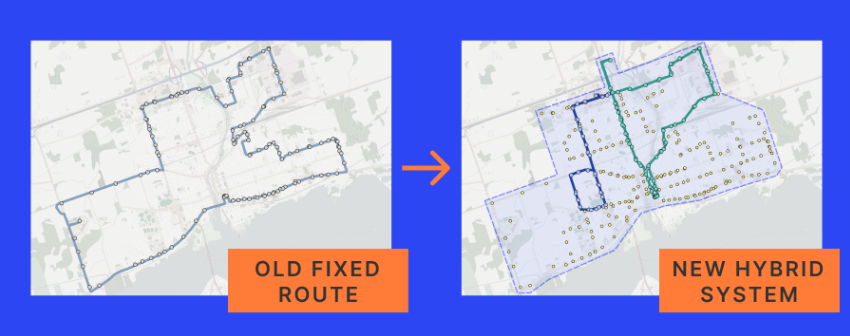
Fixed-route buses are a staple in public transit systems across most cities. Transit planners carefully craft these routes, considering factors such as community accessibility, popular destinations, and scheduling. Periodically, transit systems undergo redesigns, either partially or entirely, with the aim of better addressing the needs of riders. However, these redesigns may sometimes fall short of achieving their intended improvements.
The effectiveness of newly established fixed routes varies, with some successfully meeting riders’ needs while others fall short. The key to well-designed fixed routes lies in a precise understanding of how riders utilize transit for their journeys. However, transit planners often rely on fragmented data from past fixed routes, hindering their ability to accurately grasp rider behavior. In the absence of informative data from fixed routes, transit agencies can turn to on-demand services as a valuable alternative. While it may seem counterintuitive, deploying on-demand services can significantly aid in enhancing fixed routes. Based on our experience, nothing surpasses the effectiveness of our on-demand service in generating accurate and insightful rider origin-destination data.
Data From On-Demand Service is More Informative
optimization algorithm introduces a distinctive feature by directing all vehicles through a single zone, enabling transit agencies to offer transfer-free service. This means riders can travel directly to their desired destinations at any time, enhancing overall convenience.
The on-demand service records precise trip data, capturing exact origins and destinations as riders utilize the system. This data proves invaluable for transit agencies, providing deep insights into how riders prefer to navigate the city. In contrast, the data traditionally used for designing fixed routes lacks comparable utility.
A prevalent challenge for transit agencies is the absence of high-quality rider travel data. Typically, agencies rely on data from rider counters on fixed routes, which has limitations. This data only registers when riders board the bus, lacking information about where and when they disembark. Moreover, these counters fail to differentiate between riders transferring from one bus to another, leading to inflated ridership figures. Consequently, the insights derived from such data are restricted.
Counter data also lacks contextual information, making it challenging for transit agencies to understand the popularity of a particular fixed route. For instance, a route may appear popular based on ridership numbers, but without context, agencies cannot determine the underlying reasons. It might be due to a popular destination along the route, like a local Walmart, attracting riders, while the rest of the route sees minimal usage.
This limited understanding hampers the effectiveness of fixed route designs derived from such data, resulting in suboptimal designs that do not align with how riders prefer to travel.
Source: Pantonium
